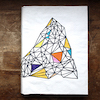L’iconographie des Mille et Une Nuits et le modernisme : du texte à l’image
DOI :
https://doi.org/10.18352/relief.546Mots-clés :
Duizend-en-één-nacht, Illustrations, Modernism, Orientalism, DulacRésumé
Alors qu’au XVIIIᵉ siècle et dams la première moitié du XIXᵉ siècle, Les Mille et Une Nuits ont relativement peu contribué à l’iconographie européenne de l’orientalisme, la fin du XIXᵉ siècle voit une multiplication des traductions illustrées, anthologies et réécritures. Cette évolution est liée à l’amélioration des techniques d’impression et à l’amalgame progressif entre les tendances orientalistes et modernistes dans l’art. Une nouvelle imagerie se développe, qui ne se contente pas de représenter l’Orient, mais en adopte aussi l’esthétique, intégrant ainsi des styles orientaux dans l’art moderniste. Cette évolution se manifeste notamment dans l’œuvre d’Edmund Dulac, l’un des illustrateurs les plus marquants des Mille et Une Nuits. En outre, la convergence de ces courants aboutit à une fonction plus autonome de l’image : elle n’est plus au service du récit, mais tend au contraire à dominer la perception des histoires.
Téléchargements

Téléchargements
Publié
Numéro
Rubrique
Licence
© Richard van Leeuwen 2010

Cette œuvre est sous licence Creative Commons Attribution 4.0 International.
Tous les articles dans RELIEF sont publiés en libre accès sous la licence Creative Commons Attribution 4.0 International License (CC-BY 4.0). Sous ce régime les auteurs conservent les droits d'auteur mais ils consentent à toute sorte d'utilisation de leur texte pourvu qu'il soit correctement cité.








